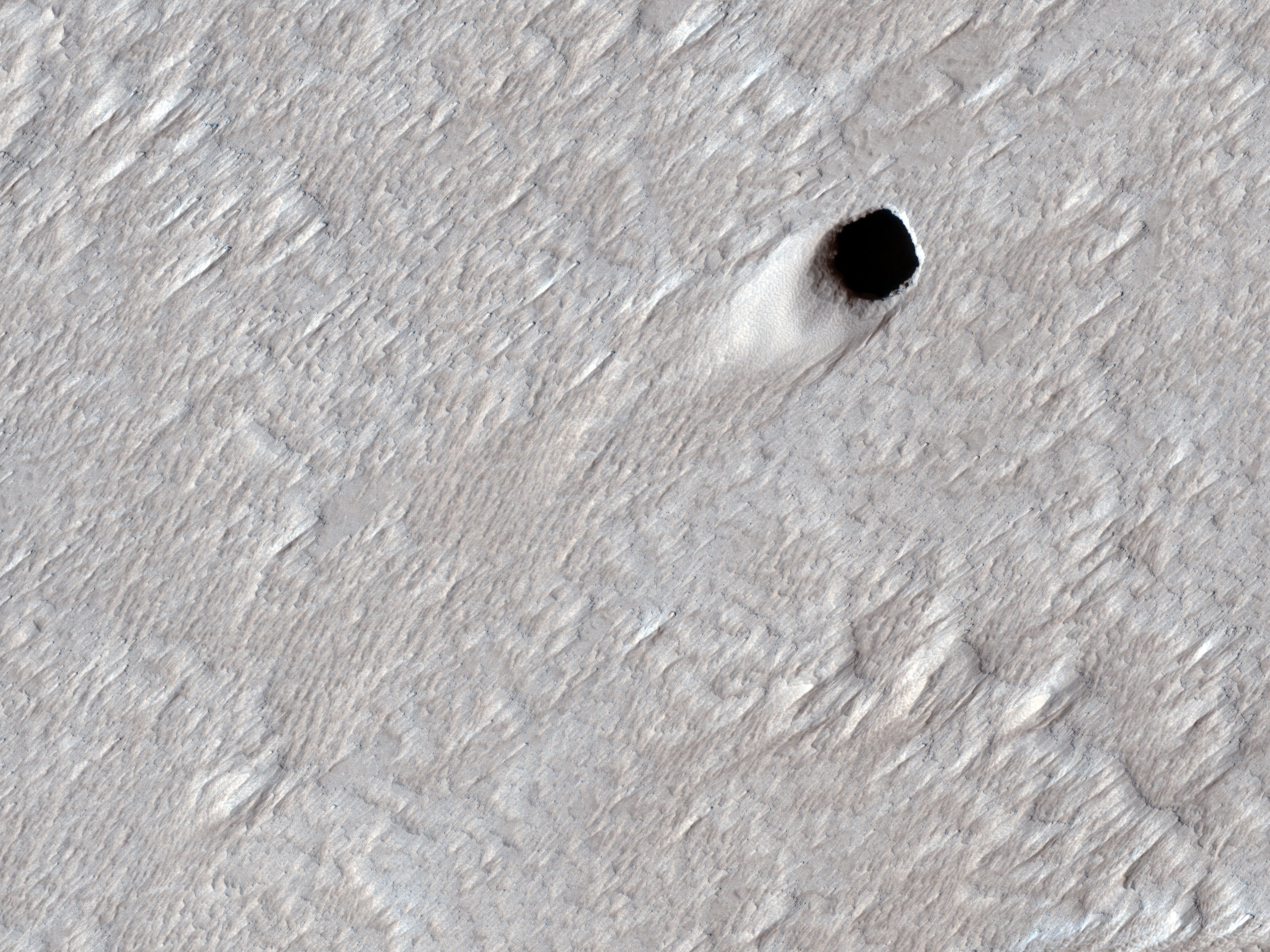Some types of lava can squeeze underneath older rock and lift it up so it can continue to flow underground. Large underground rivers of lava can form this way and when the volcano stops erupting, the lava can drain out of these underground tubes. These empty underground tubes are common on the Earth and may criss-cross the giant volcanoes of Mars like in this location on the flanks of Arsia Mons.
In this image, the ceiling of the lava tube collapsed in one spot and made this pit crater. The pit is about 50 meters (150 feet) across, so it’s likely that the underground tube is also at least this big (much bigger than similar caves on the Earth). HiRISE can’t see inside these steep pits because it’s always late afternoon when we pass overhead and the inside is shadowed at that time of day.
ID:
ESP_065887_1660date: 16 August 2020
altitude: 250 km
https://uahirise.org/hipod/ESP_065887_1660
NASA/JPL-Caltech/University of Arizona
#Mars #science #NASA
